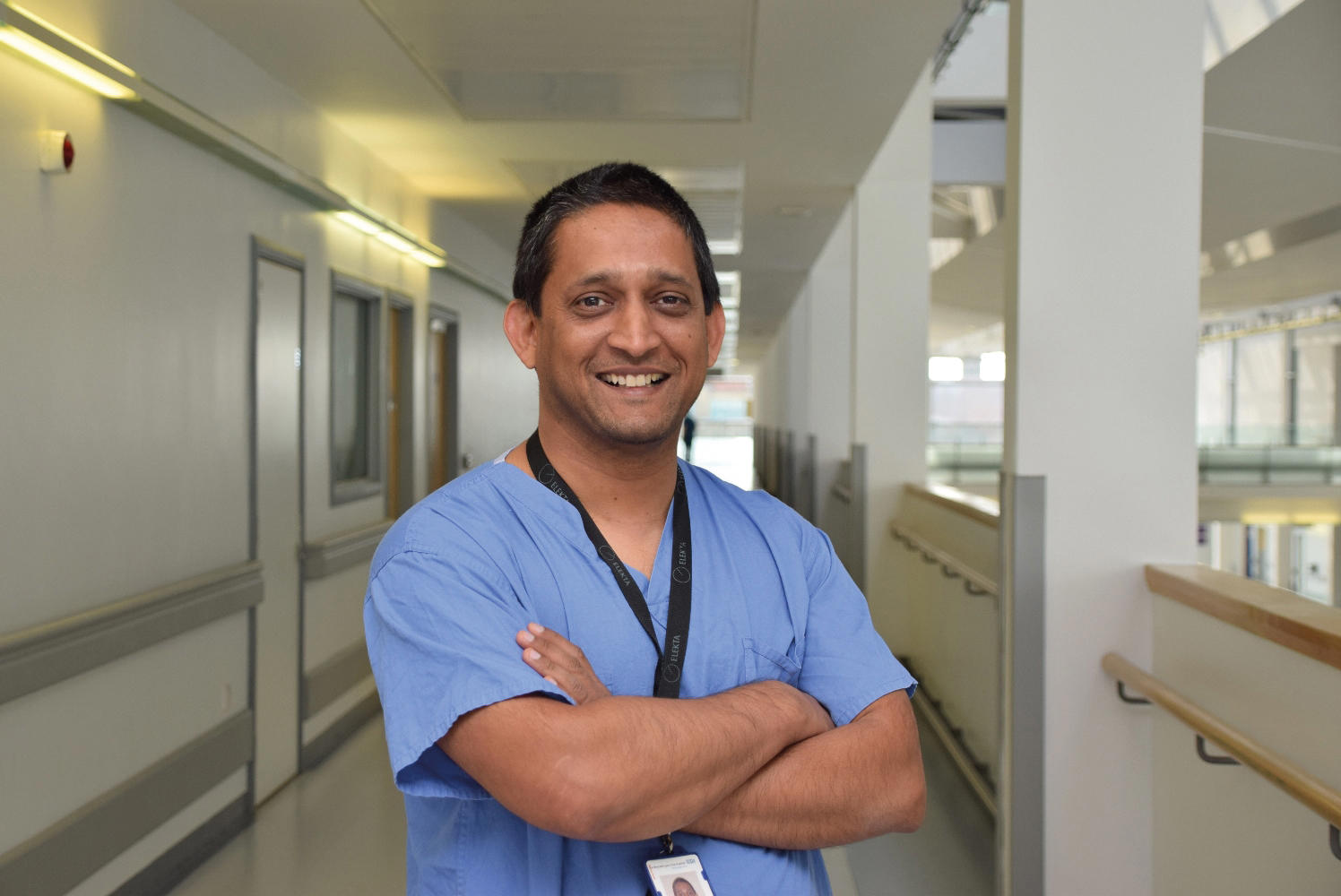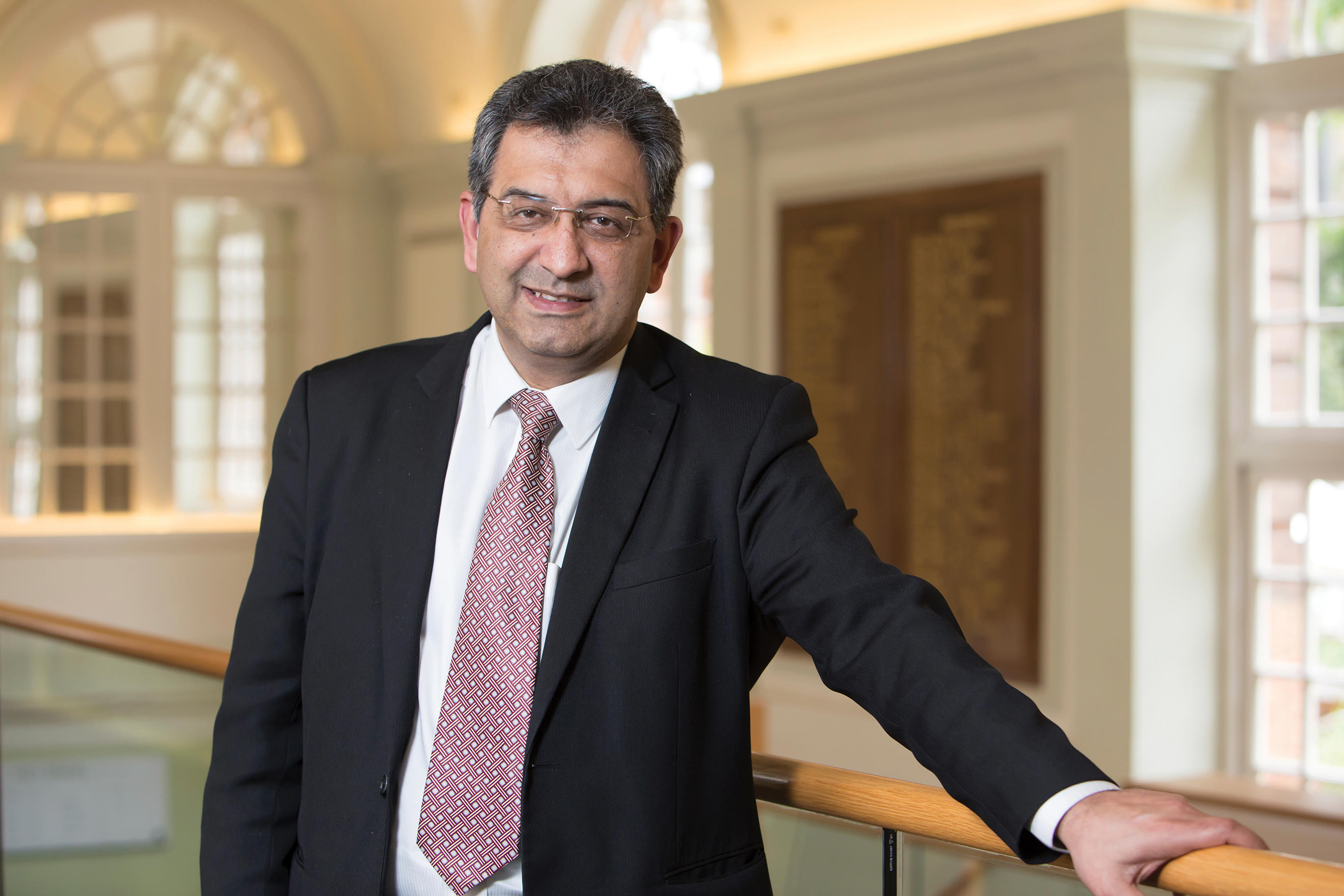Imagine for a moment a highly talented and experienced doctor eager to make a difference to the NHS. Each day, this doctor works long hours helping to cover rotas, dedicatedly caring for patients and diligently supporting their healthcare colleagues in a health service battling against a pandemic and a mountainous backlog of elective care.
Then imagine that this same doctor does all of this despite not having the protections of a nationally recognised contract or agreed pay scale, despite not having guaranteed access to training and professional development and all the while having to cope with uncertainty over the security of their post.
While such a set of circumstances might at first seem unthinkable, they are in fact the day-to-day reality for many of the LEDs (locally employed doctors) working in today’s health service. Employed directly by trusts usually for non-permanent roles, the terms and conditions of employment experienced by LEDs vary hugely and can, in a very literal sense, be a postcode lottery.
Not considered to be a trainee role, employers are not obligated to provide LEDs with access to specialty training, while the doctors are still subject to yearly appraisals and revalidation every five years. Despite being overlooked almost to the point of invisibility, LEDs form a significant minority of the health service workforce, with data gathered by local negotiating committees estimating that there could be up to 20,000 working across the NHS.
The dearth of awareness of LEDs is perhaps in part owing to the variety of job titles assigned to doctors working in these roles, which can include clinical or teaching fellow, trust-grade doctor, trust registrar or even foundation year 3.
Rotas and pay
While the backgrounds of doctors in this group are also varied, with UK and international medical graduates occupying these roles, LEDs are predominantly men from minority ethnic backgrounds who gained their primary medical qualification overseas.
Ihsan Jibril (pictured above) came to the UK last year having completed medical school in her home country of Nigeria 13 years ago. Having previously worked at the level of specialist registrar in infectious diseases and dermatology back in Nigeria, Dr Jibril is now employed as a ‘locum appointment for service’ at a trust in Sheffield, where she also works as the representative for LEDs in her trust division.
She says that, while her own experience as a trust-grade doctor has been a positive one, she knows of many other doctors at other trusts where this is not the case.
‘I’m lucky because the trust and the department I am in are quite supportive of LEDs so that has been positive for me, but I know that that’s not the story for a lot of other trust-grade or locally employed doctors,’ says Dr Jibril.
‘I’ve been able to speak with doctors from my own trust as well as other trust-grade doctors in other trusts all over the UK and most of the feedback I’ve gotten were [concerns] around rotas, education and pay protection.’
Contracts vary a lot, because they are under the discretion of the employing trustDr Jibril
Dr Jibril says, for many IMG (international medical graduate) doctors, the prospect of working in the NHS, even if only for a few years, is an attractive proposition in terms of professional development and gaining experience, and that, to this end, non-permanent LED roles can seem like a logical choice.
She adds that, unfortunately, the inconsistency in what conditions and support doctors receive means not all LEDs are able to benefit from their posts.
‘The problem is contracts vary a lot, because they are under the discretion of the employing trust,’ Dr Jibril explains.
‘Some trusts are very, very good and they basically give you almost the same treatment as they would give their own trainees but for some trusts it’s different.
‘Some trusts give inductions to new trust-grade doctors and some don’t. Sometimes they are just thrown into the rota and many of us are IMGs so it’s difficult to start on day one without proper induction.
‘Trust-grade doctors are employed for service so they may not have a specific ward where they can work every time so it’s very unpredictable. They can be moved from ward to ward depending on where there is a service gap. For the doctor [experiencing this] they will not get the professional development because they wouldn’t have experience in just one ward.’
Lack of training
Limited access to training and opportunities for professional development are frequently reported as one of the main concerns of doctors working on a locally employed basis.
Indeed, with staffing shortages across the whole of the NHS, there is even greater pressure on LEDs to cover gaps in rotas created when junior doctor colleagues are required to take time out for training.
 SURASH: Set up LED support programme at his trust
SURASH: Set up LED support programme at his trust
The difficulties faced by LEDs in maintaining continuing professional development is something that clinical teaching fellow and the acting vice-chair of BAPIO’s (the British Association of Physicians of Indian Origin) LED forum Priyanka Nageswaran knows all too well.
LED is the umbrella term for a variety of titles that doctors are given at different trusts, ranging from ‘trust grades’, ‘trust doctors’, ‘clinical fellows’, and ‘FY3 doctors’ among others.
‘With LEDs there are no nationally agreed terms and conditions and no agreed training opportunities, which means LEDs are treated very differently across the country depending on which trust they are working in,’ Dr Nageswaran explains.
‘There are some trusts that do this very well. However, there are also a large number of trusts that don’t do this well, and this is something that needs to be addressed as a matter of importance given the current workforce pressures.
‘LEDs are often overlooked or omitted from teaching programmes or training opportunities that take place in hospital trusts, and therefore it feels like doctors that are working in these roles are merely present to plug the needs of trusts at the expense of their own professional development.’
Often overlooked or omitted from teaching programmes and training opportunitiesDr Nageswaran
Dr Nageswaran says that, regardless of whether in formal training or not, the GMC requires all doctors to maintain their knowledge and skills to practise safely, adding that limiting access to training is not only detrimental to LEDs’ progression but also potentially puts patients at risk.
‘We have to question whether keeping LEDs stagnant and not providing these training opportunities plays any benefit at all. Ultimately, it leads to a widening attainment gap between those in formal training and those who aren’t, which also disproportionately affects certain groups such as IMGs who make up a large proportion of LEDs.’
With many LEDs hailing from overseas, the effect of unfamiliarity with the UK and NHS often compounds the challenges they face in the workplace. This is something the BAPIO SAS and LED forum hopes to address, among other issues, as they host the very first conference for LEDs on 24 September in Leicester.
‘There is a lot of support that these doctors need,’ she says. ‘Many are undergoing a period of uncertainty; some of these doctors have not undertaken medical education within the UK, and few have seen the UK healthcare system up close before they join its workforce, and that can place a lot of pressure on them personally if they are not supported or supervised adequately.’
‘A huge cohort’
Newcastle-based consultant neurosurgeon Surash Surash is a long-standing advocate for LEDs and was responsible for setting up a LED support programme at his trust, the first of its kind in England.
With LEDs now accounting for tens of thousands of doctors in the NHS, he says there is a greater need than ever to give these staff the recognition and support they deserve.
‘We’ve got a huge cohort here of very, very talented, very, very bright doctors who for whatever reason aren’t trainees but do not have any national protection or local protection and who have no job permanency,’ explains Mr Surash.
‘As a trainee, you have eight years from specialty trainee 1 to ST8 guaranteed placement. If you speak to LEDs many of them are waiting for their job contract renewals every six months or every year [so] there’s no certainty. Some of these people have got young families with young kids with husbands and wives who are hanging around waiting for what’s going to happen with their jobs.’
It leads to a widening attainment gap between those in formal training and those who aren’tDr Nageswaran
Supporting LEDs can take many forms and is largely dependent on what an individual doctor wishes to achieve in his or her career.
Some trusts enable LEDs to gain consultancy through the CESR programme, with Mr Surash having personally aided one doctor in doing just that.
While the law provides a legal right to a permanent contract after four years of continuous service, data gathered by local negotiating committees through the LED toolkit developed last year by the BMA found 530 doctors, still in LED roles, who had accrued four to 10 years’ service, with 100 having worked for more than a decade.
 KOCHHAR: Does not want to see creation of ‘another forgotten tribe of doctors’
KOCHHAR: Does not want to see creation of ‘another forgotten tribe of doctors’
For Mr Surash, achieving greater equity for LEDs cannot be brought about through a single measure, but requires employers and other doctors to begin to start questioning the way their LED colleagues are treated.
‘You can’t have one single policy because there are doctors who will do [LED roles] for six months to a year, other doctors who will do this for their whole career, so we’ve got to respect the fact that there are people doing this for various different reasons and there’s no one-size-fits-all,’ he says.
‘For me, it’s about breaking down the hierarchy and levelling the field and you’re only going to really do that by first of all treating people in your department the same, regardless of their employment status.’
In a move that has the potential to improve the level of support available to LEDs, the BMA last month launched an affiliate membership package designed to support overseas doctors planning on working in the health service before they even arrive in the UK.
Contractual agreement
At this year’s BMA staff, associate specialist and specialty doctors conference, doctors endorsed calls to introduce an agreed framework and timeframe where LEDs wishing to transition to an SAS contract be empowered by their employer to do so.
BMA staff, associate specialist and specialty doctors committee deputy chair Amit Kochhar has long sought to highlight and champion the work of LEDs, saying that he knows only too well what it is like to belong to an overlooked and often exploited branch of practice within medicine.
Some of these people have got young families who are waiting for what’s going to happen with their jobsDr Surash
He adds that, with growing awareness of the unfair plight faced by many of these doctors, he hopes even more can be done to support them.
He says: ‘I am passionate about representing them as I do not want to see the creation of another forgotten tribe of doctors just as we were in the past.
‘These doctors deserve to be valued and welcomed and their challenges addressed especially as regards their induction and mentoring to further their career progression.
'It is vital we support them or as one of the doctors said to me, they will become the “locally exploited doctors”.
‘The NHS depends on these individuals for its continued functioning, and yet they are often taken for granted. Standardised terms and conditions of service should be offered with educational learning and supervision during their placements.’
Photo of Ihsan Jibril by Neil Hodge

